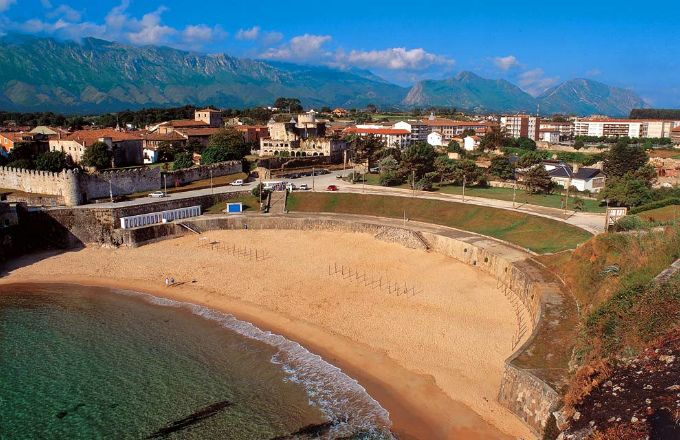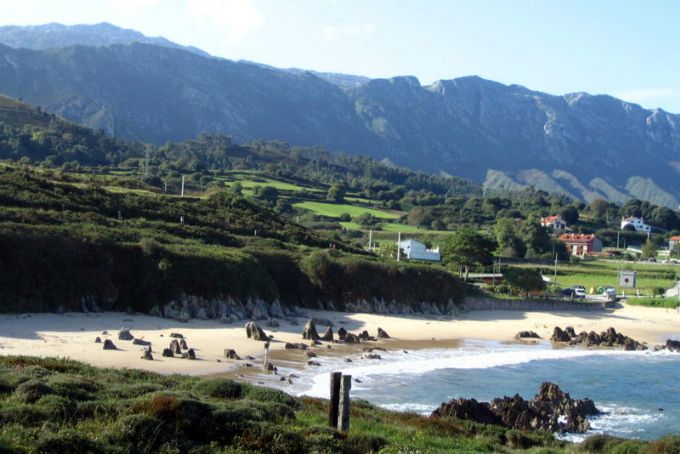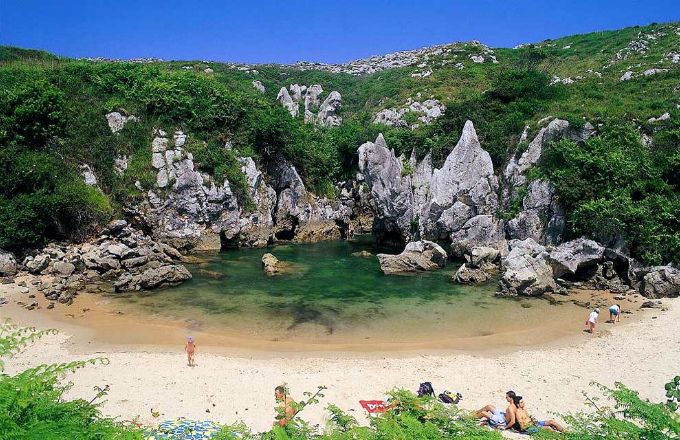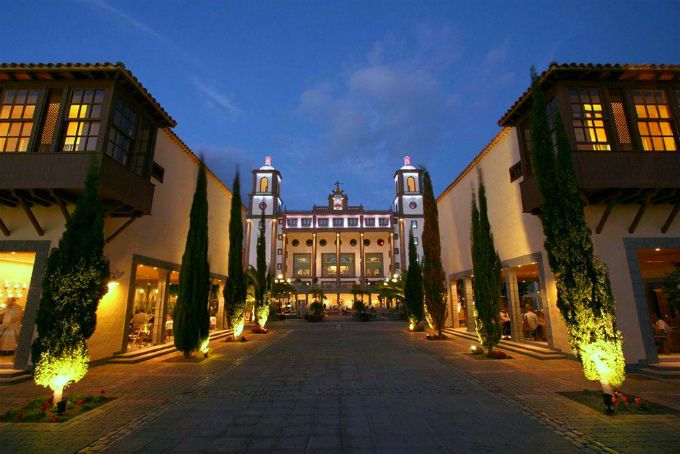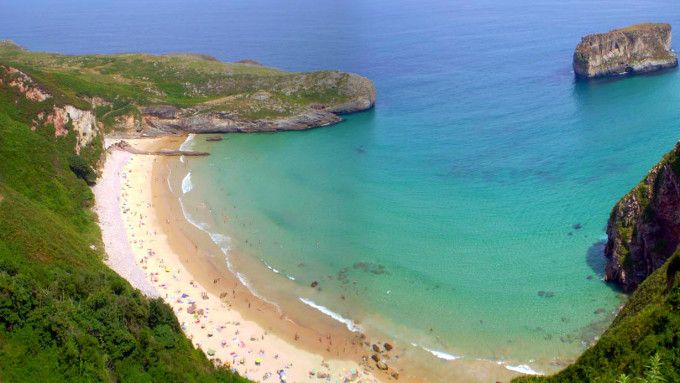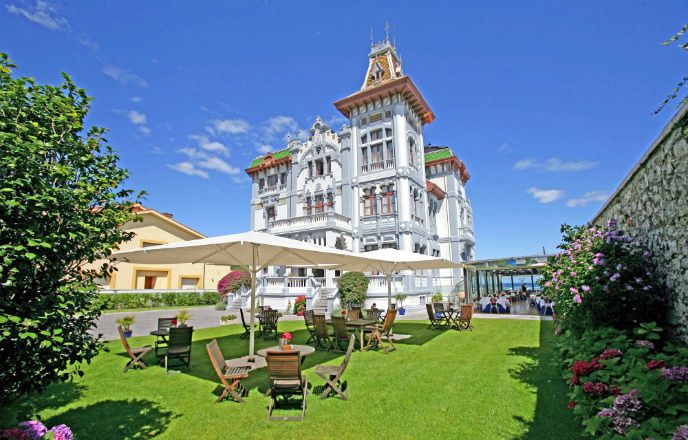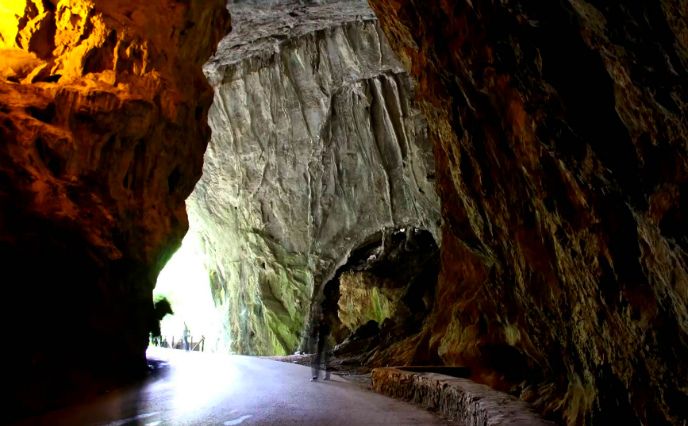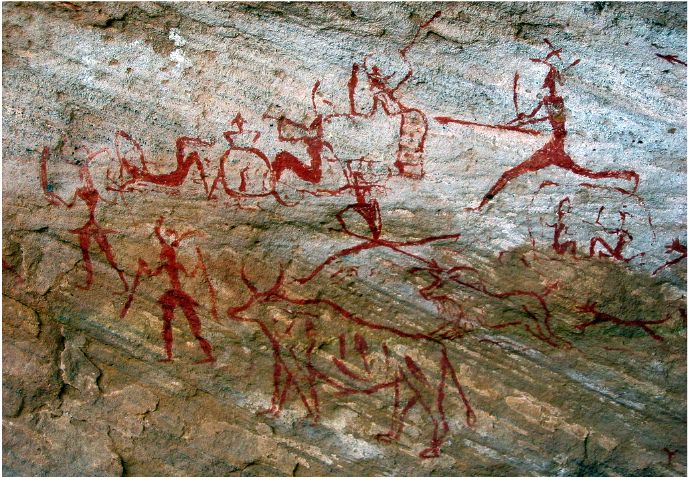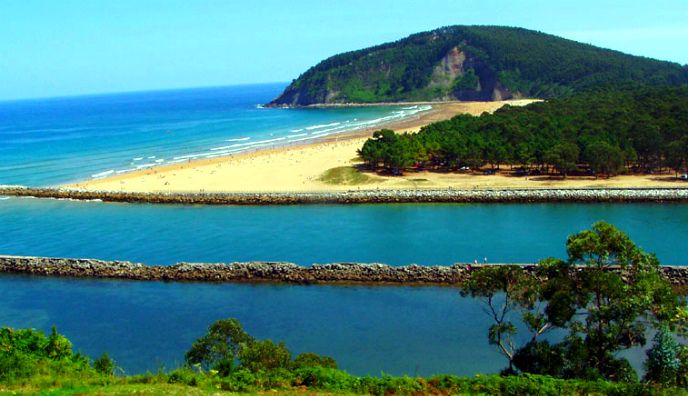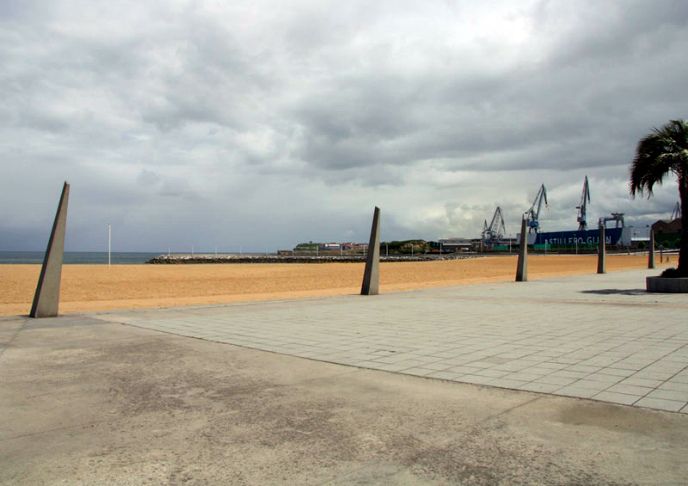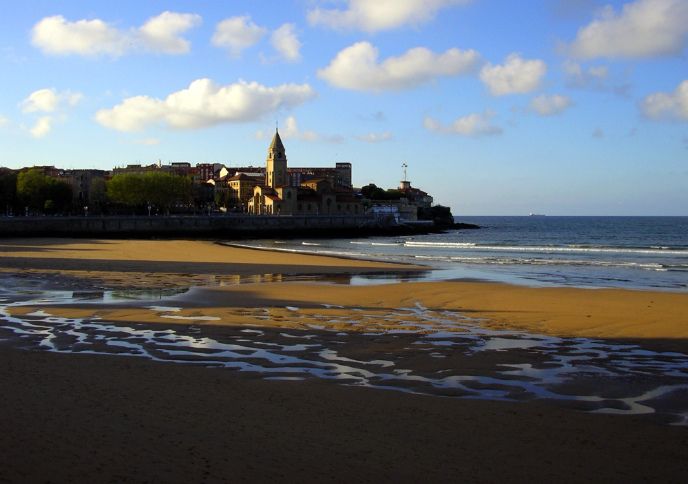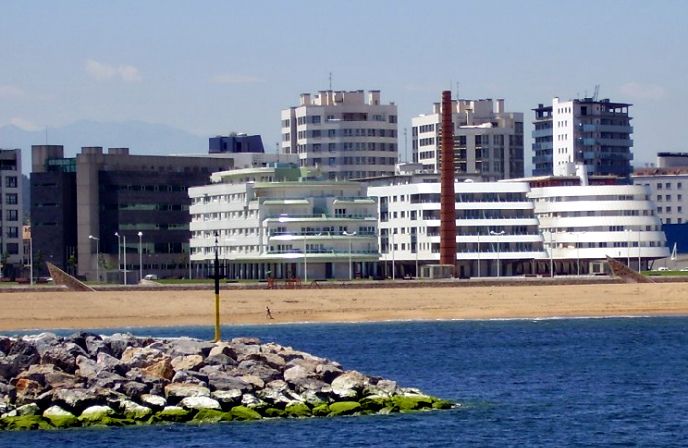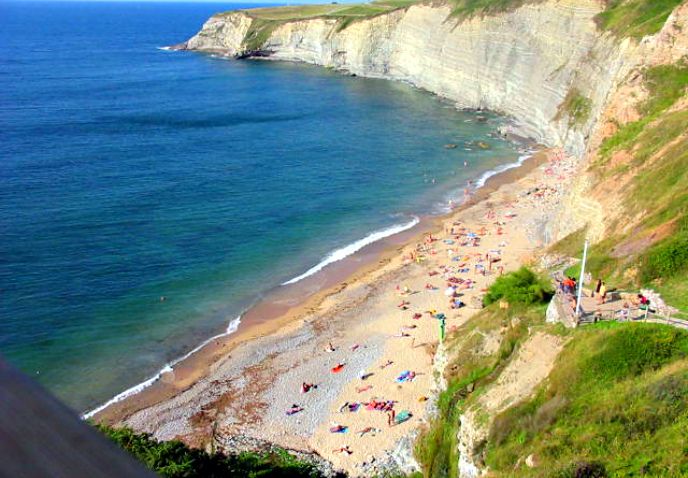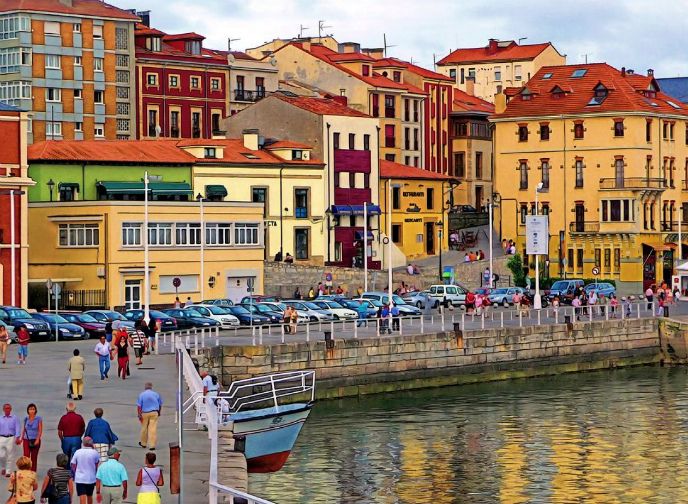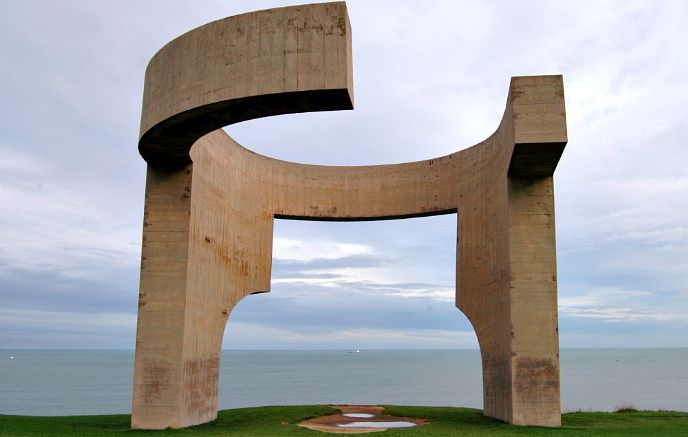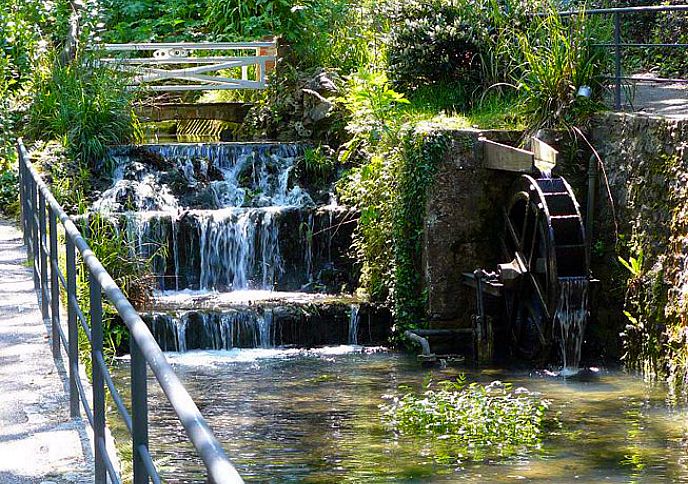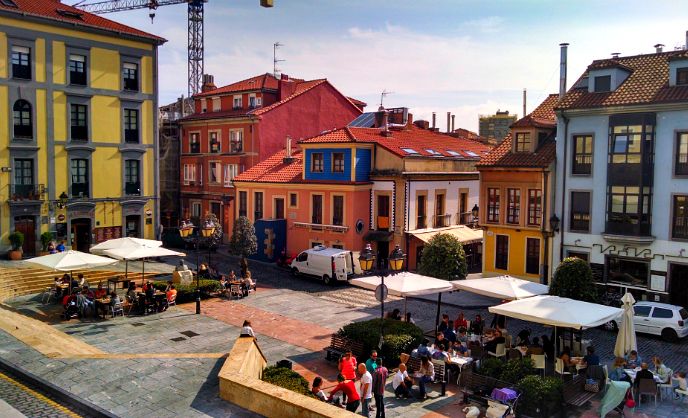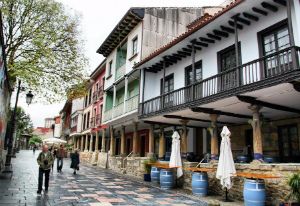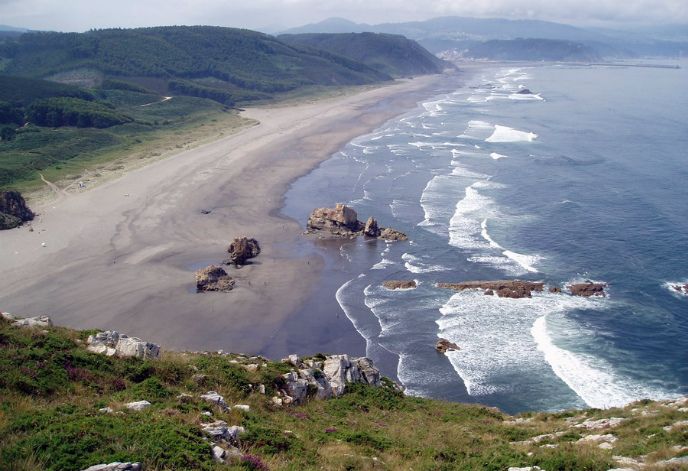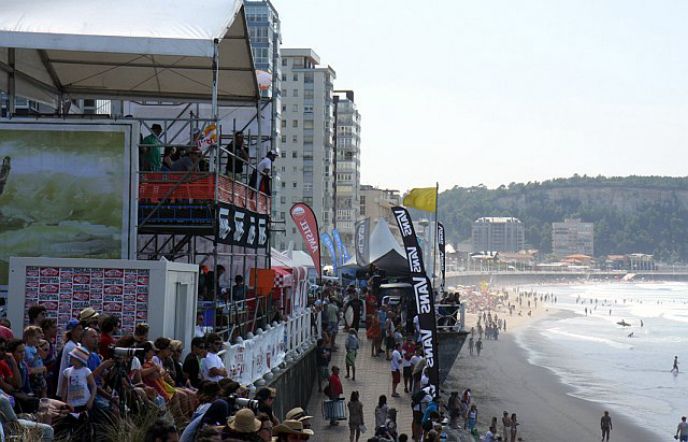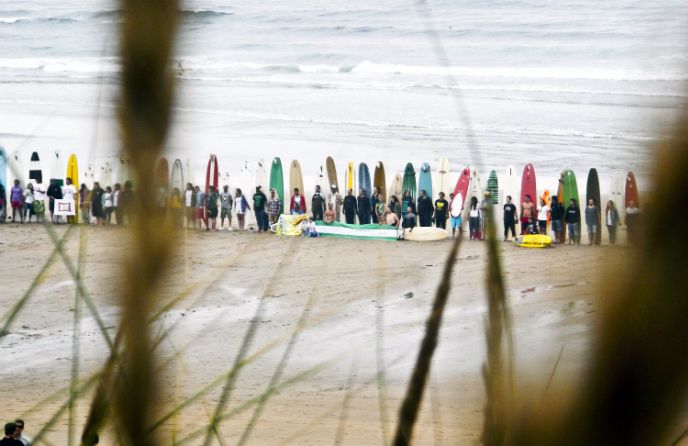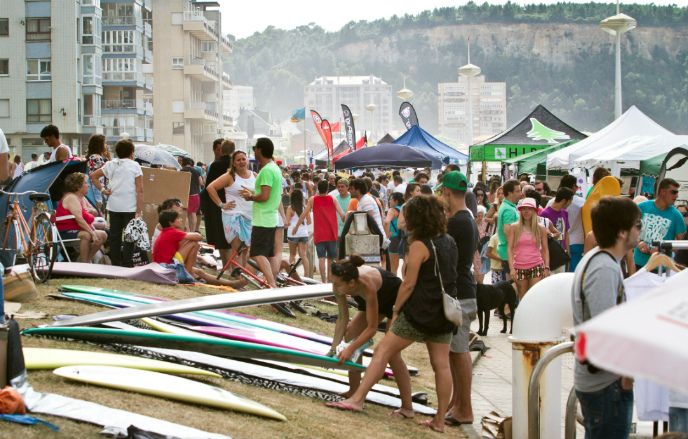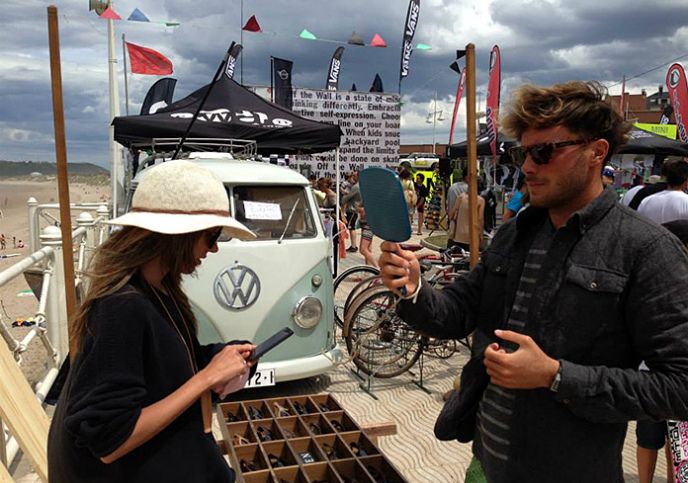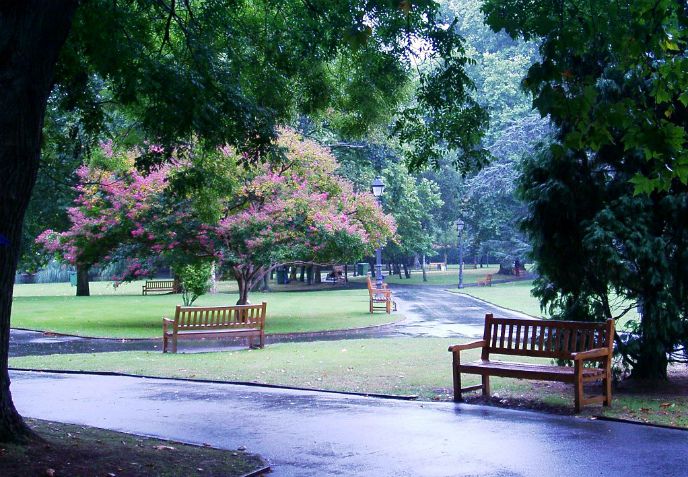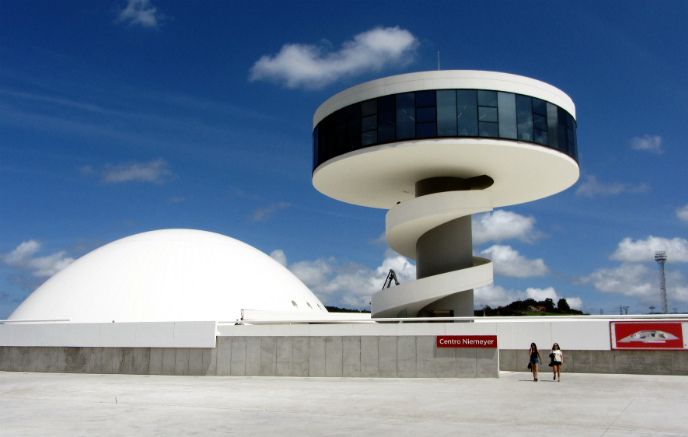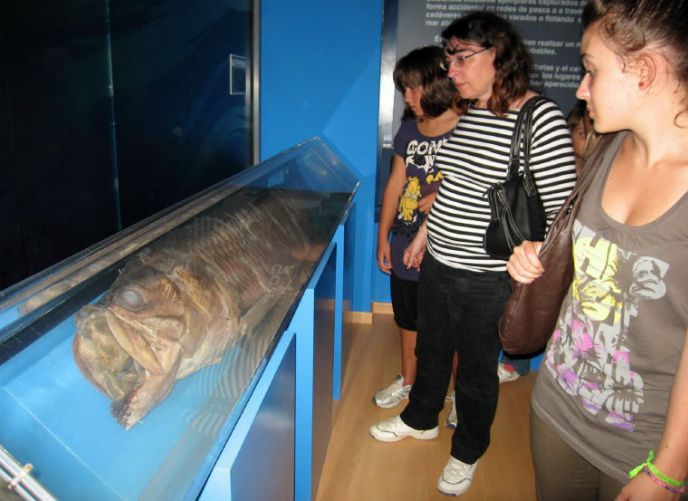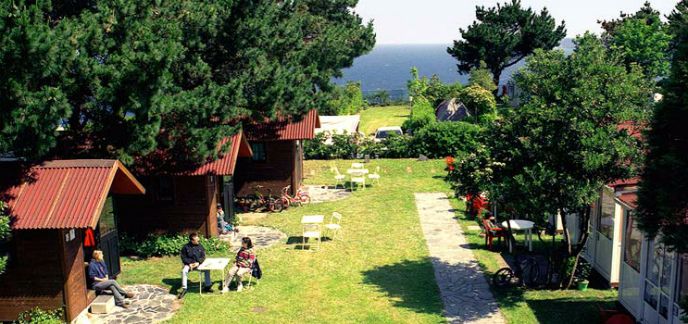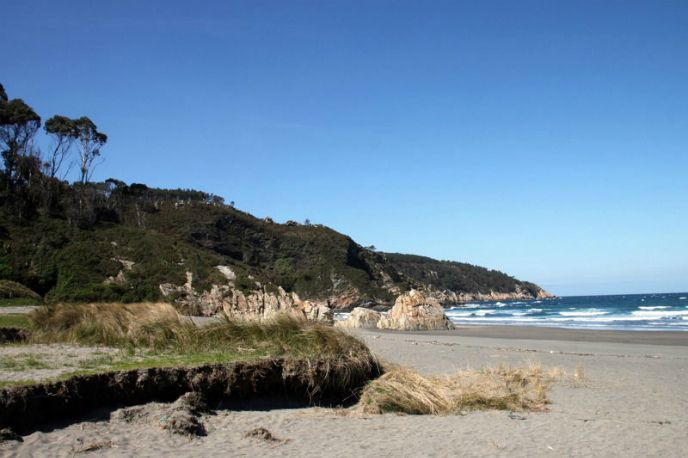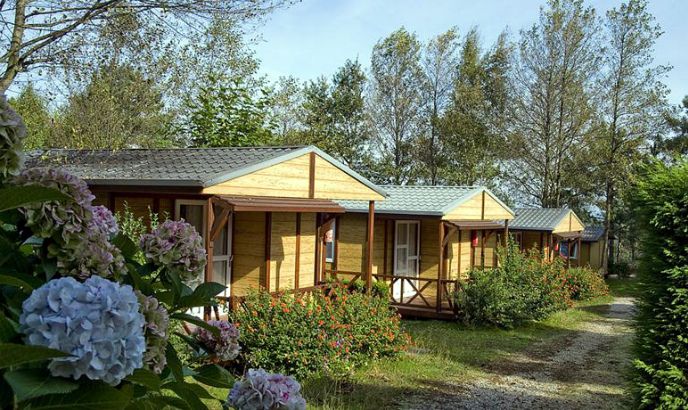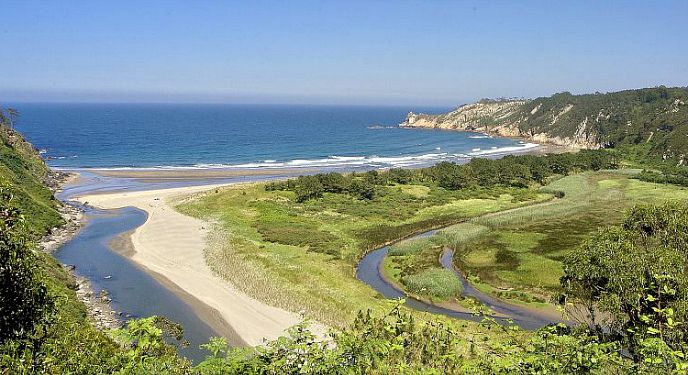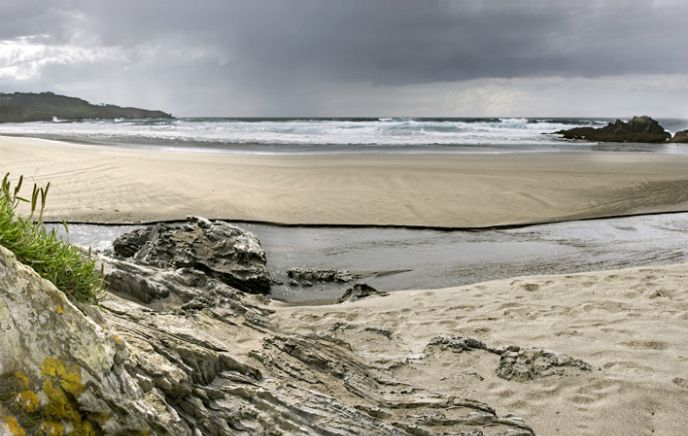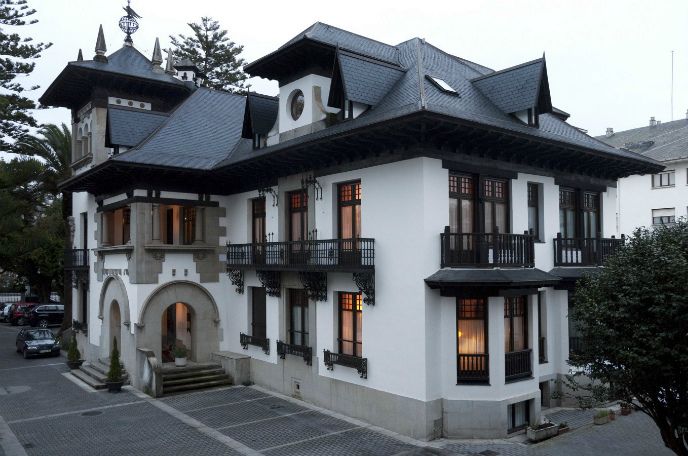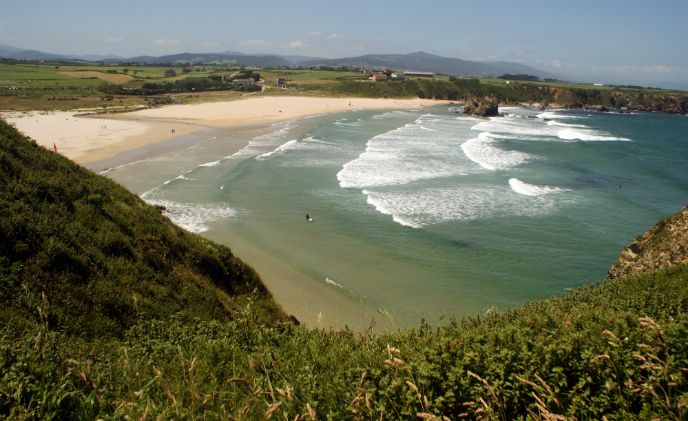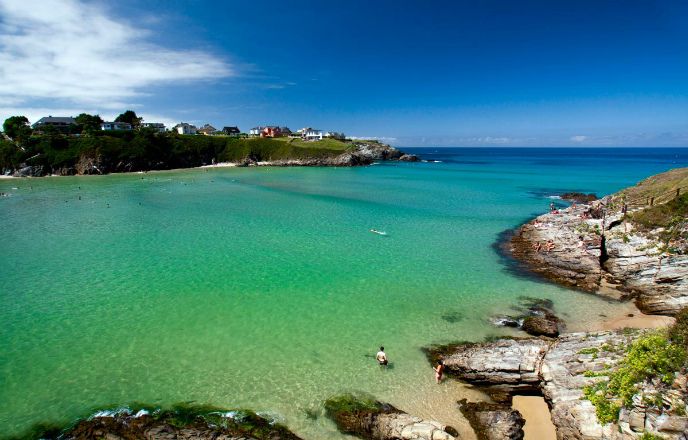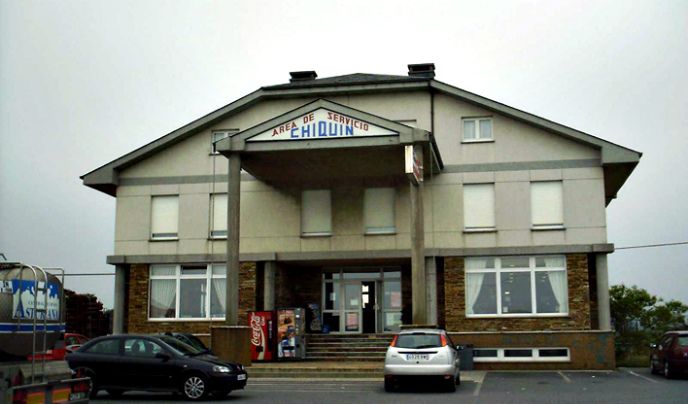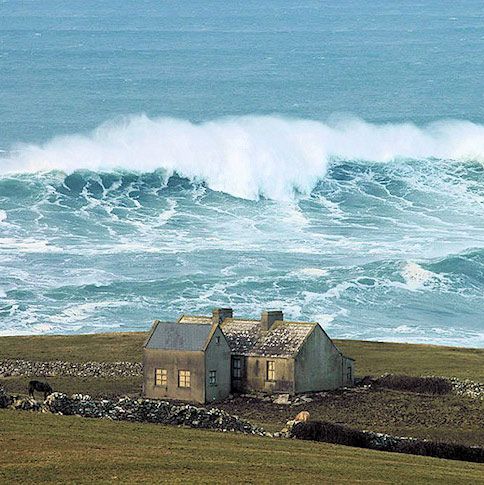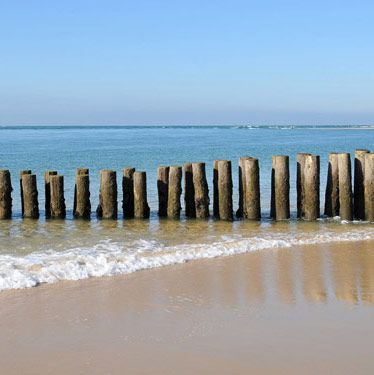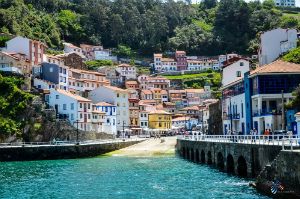 Asturias - The Best Beaches on the Coastline of Spain
Asturias - The Best Beaches on the Coastline of Spain
Asturias is separated from the rest of Spain by mountain ranges. This green, sparsely populated region, boasting a high standard of living, offers a unique combination of mountains and ocean, ancient monuments, caves, and Romanesque churches.
The region is home to unique cultural elements such as the traditional bagpipe and distinctive granaries called hórreo, used for storing supplies and tools. Asturian cuisine is equally authentic, featuring seafood delicacies, cheeses, fried pork, and apple cider, the province’s signature drink.
Asturias’ climate is quite warm but unpredictable. Due to its proximity to the Atlantic, the region experiences frequent rains and storms, which have created a lush and vibrant landscape.
The picturesque coastline stretches for 600 km, featuring cliffs alternating with clean pebble and sandy beaches, as well as scenic coves.
The best waves can be found here from autumn to spring, attracting professionals seeking to ride tubes and catch perfect crests. In summer, advanced surfers and beginners alike won’t be disappointed. Lessons are safe thanks to the sandy seabeds.
Asturias boasts numerous excellent surfing spots, some known worldwide and others recognized only by locals. The narrow coastal strip offers 26 surf spots, providing waves of all types: peak, reef, beach, and even point break. Strong tides make exploring the beaches dramatic, with some access points hidden underwater.
Let’s take a virtual trip along the coastline heading westward.
Llanes (Llanes)
 Atlantic Coastline of Spain
The eastern part of the province features easily accessible shores, making it the most developed area for tourism.
Atlantic Coastline of Spain
The eastern part of the province features easily accessible shores, making it the most developed area for tourism.
The fishing town of Llanes offers several beaches within the town—Playa de Toro, Puerto Chicu, and Sablón—and in the surrounding areas: Playa de San Martín and San Antolín.
Waves here are varied, beach-based, and suitable for all riders. Experts recommend heading to San Martín, which can be reached via a walking path from the village of Celorio.
On the beach, nestled among cliffs, you’ll find giant rock formations carved out by the ocean. South-easterly winds create fast waves that are particularly enjoyable during low tide.
This is a favorite spot for surfers in Llanes. However, as long as guests behave respectfully, there is no localism issue here.
At the village beach café, nothing beats enjoying fried green peppers, garlic shrimp, or pork sausage in cider (chorizo a la sidra) with frothy beer after a day of surfing. Llanes itself offers great restaurants, shops, and sidrerías.
You’ll find plenty of excellent accommodation options here, from hotels to the Rio Purón campsite, offering lodging starting at €40.
 Arcea La Arquera Hotel, Llanes
Arcea La Arquera Hotel, Llanes
Noteworthy attractions include a 17th-century women’s monastery, the Old Town, and a marina. Also, just 3 km east of Llanes lies Ballota Beach, a local nudist hub.
The town is serviced by rail and bus connections.
Ribadesella
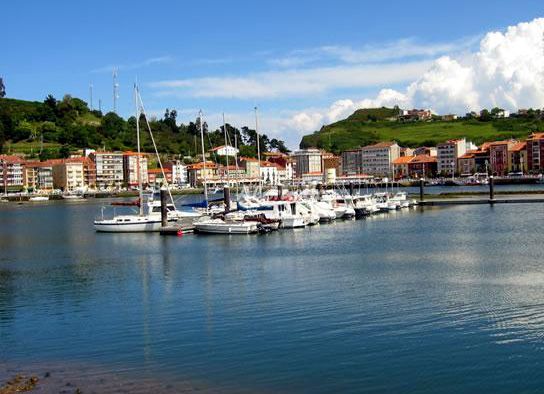 Photo of Ribadesella, Coastline of Spain
Just 18 km from Llanes is the small town of Ribadesella, split into two halves by a river.
Photo of Ribadesella, Coastline of Spain
Just 18 km from Llanes is the small town of Ribadesella, split into two halves by a river.
On the left bank is the seaport, while the right bank is home to the resort town.
The majority of hotels are located here, offering rooms starting at €40.
Beginners will enjoy the left and right beach breaks within the town itself, while more experienced surfers can find higher waves in Vega, located slightly west.
Major attractions include the long bridge across the Sella River and numerous caves.
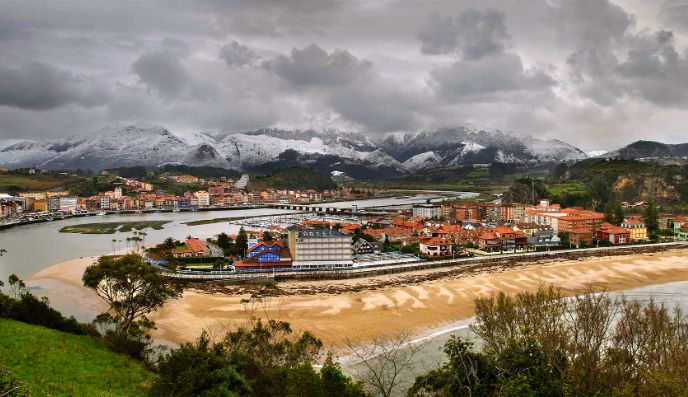 Ribadesella from Above
One of them, La Cuevona, has been turned into a 300-meter tunnel through which cars drive.
Ribadesella from Above
One of them, La Cuevona, has been turned into a 300-meter tunnel through which cars drive.
The Tito Bustillo Cave, located on the outskirts of the city, is known for its stalactites and cave paintings dating back to the 12th millennium BC.
The unique red-and-black depictions of horses and deer are particularly noteworthy.
Another destination in Portugal ->
Villaviciosa
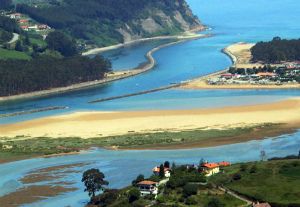 Villaviciosa with a sandy beach in Spain
Villaviciosa with a sandy beach in Spain
This small town near the coast is considered the “cider capital” of Asturias, boasting the best cider.
It is famous for the Rodiles beach, located at the sandy estuary of the Villaviciosa River. For many days, quality waves form here with a shorebreak that crashes against the pier.
The left-hand waves, reaching heights of up to 4 meters, spin into barrels and are suited only for experienced surfers, but beginners practice closer to the shore.
A nearby school offers lessons in surfing and even board crafting.
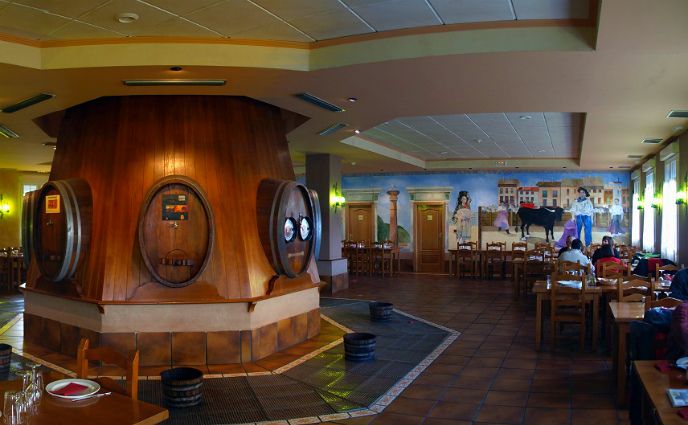 One of the bars with famous cider
One of the bars with famous cider
At the campsite, you will find private and shared rooms. Options include full-board meals, dining at nearby cafes, or cooking in the communal kitchen.
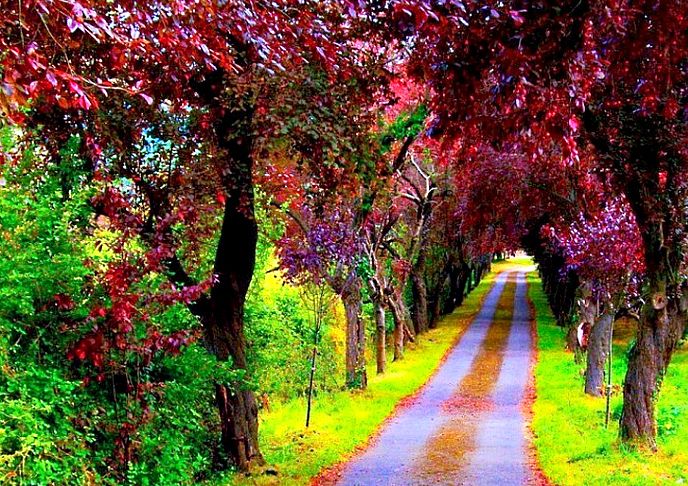 Fairytale alley in Villaviciosa
Fairytale alley in Villaviciosa
A transfer is available from the cities of Gijón and Oviedo.
Gijón
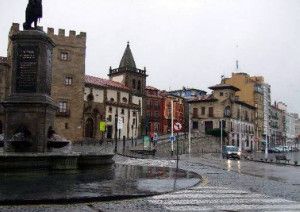 Gijón, Spain
Gijón, Spain
The largest industrial city and port in Asturias, with a population of about 280,000, is situated amidst rolling green coastal hills.
It is a renowned hub for surfing.
Across from the Cimavilla peninsula and further east along the coast, there are five surf spots.
- The farthest one, Peñarrubia Beach, is distinguished by its left and right-hand waves formed by a rocky reef; during large swells, the surfing direction is left.
At the neighboring Camping Site spot, similar conditions can be found nearby a campsite.
Along the extensive sandy San Lorenzo Beach, surfers paddle in different directions.
At the reef spots Sanatorio Marítimo and Santa Catalina, the right-hand waves are well-known.
A unique location is La Roca, where waves break to the right over a reef stretching out like a spit.
Cimavilla is a chic district for shopping and entertainment. Atop the hill lies a park with the “Praise of the Horizon” sculpture.
The peninsula shields the beaches Poniente and Arbeyal from ocean waves, making these spots ideal for city dwellers to swim.
The city’s coastal area is dotted with historic boutique inns, modern beachfront hotels, and hostels starting at 30 euros.
Many surf schools rent local houses for the season.
The cobblestone-paved old streets are filled with restaurants and cider bars.
In Gijón, visitors can enjoy equestrian competitions, dolphin attractions, diving, yacht rentals, an aquarium, bullfighting, and the Atlantic Botanical Garden.
This city boasts an abundance of sculptures, theaters, galleries for contemporary art, and cutting-edge technology exhibitions.
Points of interest: The Bagpipe Museum, an archaeological park, historic churches, and the Museum of the People of Asturias.
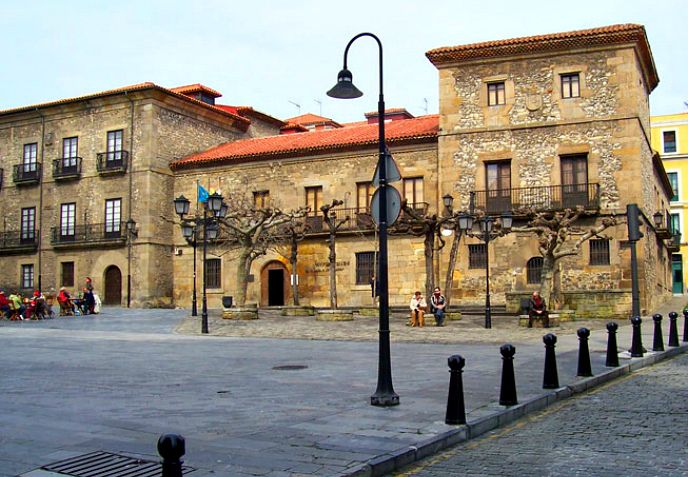 Museum of the People of Asturias
Museum of the People of Asturias
The Asturias airport is just 38 km away, providing flights to major European cities.
Around 20 km south of Gijón lies the provincial capital, Oviedo, featuring ancient churches, cathedrals, the fantastical Congress Palace, and unique street sculptures.
Surf holidays on the English peninsula ->
Avilés
Located 19 km away at the river’s estuary is the port city of Avilés, known for its medieval churches and the famous arcades of the Old Town.
Centuries of history are reflected in buildings of various styles: Romanesque, Gothic, Baroque, and Modernist architecture.
Avilés is the city of seven beaches. Two of them, Bayas and Deva, have been declared natural monuments, while the Espartal beach is followed by picturesque dunes.
Surfers frequent the ocean coastline near the city. Athletes of all levels enjoy gliding along the right- and left-breaking beach waves at the spots of Xagó, Xivares, and Salinas.
Since 2001, the nearby town of Salinas has been hosting an international longboard festival.
The beautiful de Ferrera Park, adorned with flowers and fountains, embellishes the town center.
In the industrial area, the grand cultural Centro Niemeyer has recently been built.
This is the only creation of the famous Niemeyer in Spain. The snow-white dome of the museum, the viewing tower, and art exhibitions attract tourists.
 Strolling Through the Streets of Avilés
Strolling Through the Streets of Avilés
The streets of Avilés are filled with taverns, restaurants, and tapas bars, offering specialties like Gorfolí and La Peral cheeses, as well as delicious dishes made from the freshest seafood.
 What You’ll See at Alamar Surf House
What You’ll See at Alamar Surf House
Hotels in historic buildings start at 40 euros. Alamar Surf House on Salinas Beach offers lessons in surfing, horseback riding, fishing, and mushroom picking. Accommodation costs 50 euros.
Luarca
 Luarca - The Best Beaches in Spain with White Sand
Located 64 km from Gijón, in a valley descending to a harbor, is the jewel of the Bay of Biscay – Luarca.
Luarca - The Best Beaches in Spain with White Sand
Located 64 km from Gijón, in a valley descending to a harbor, is the jewel of the Bay of Biscay – Luarca.
The enchanting view of the bay, numerous beaches, and rich flora and fauna turn tourists into avid fans of this region.
The town itself, sheltered from winds, boasts sandy beaches suited for swimming.
The main attraction is the Museum of the Giant Squid.
To the east of the resort, on the ocean shore, you’ll find the cozy Los Cantiles campground.
Just 7 km east of Luarca, surfers of all skill levels will find the 600-meter-long Playa de Cueva, featuring caves, cliffs, and a river.
The sand, versatile waves, and picturesque views make Playa de Cueva one of the best beaches in Asturias.
Another attraction for surfers is spot Otur (Villar), located 8 km from the town, offering perfect left- and right-breaking waves for all skill levels.
Just 600 meters from the beach, there is a campground that costs 24 euros per night for two adults.
The campground offers groceries for sale, a snack bar, and a restaurant.
One kilometer from Otur Beach is Playa de Barayo, a designated nature reserve and nudist area full of rare birds.
Navia
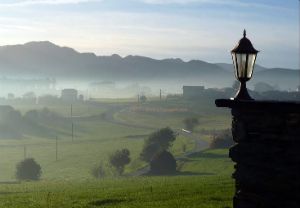 Navia - The Most Beautiful Beaches in Spain
The cozy town nestled on hillside slopes is ideal for those who prefer quieter resorts.
Navia - The Most Beautiful Beaches in Spain
The cozy town nestled on hillside slopes is ideal for those who prefer quieter resorts.
On the coast, on either side of the river mouth, there are two windy beaches with strong waves and shores of black sand.
To the east lies the large Frexulfe Beach (Frejulfe) with versatile beach breaks. A pristine river surrounded by green hills provides the perfect setting for relaxation.
The beach is sparsely populated, and during summer, it has a snack bar and lifeguards.
The historic Navia Park offers insights into the lives of Celts, ancient Romans, and whalers.
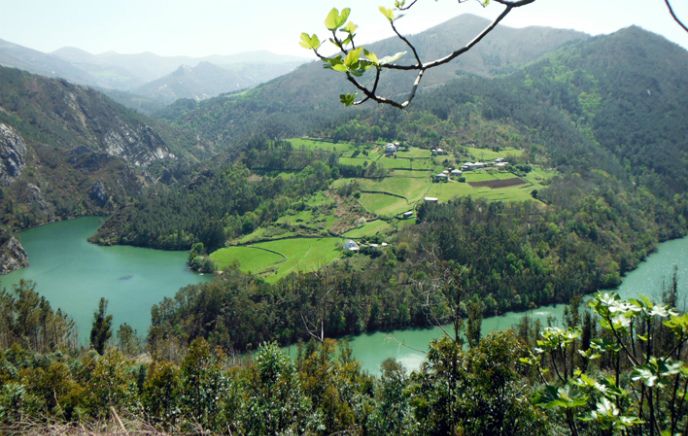 Stunning View of Navia Historic Park
Stunning View of Navia Historic Park
Walking trails wind through figures of prehistoric animals, rocks, streams, waterfalls, and fishing villages.
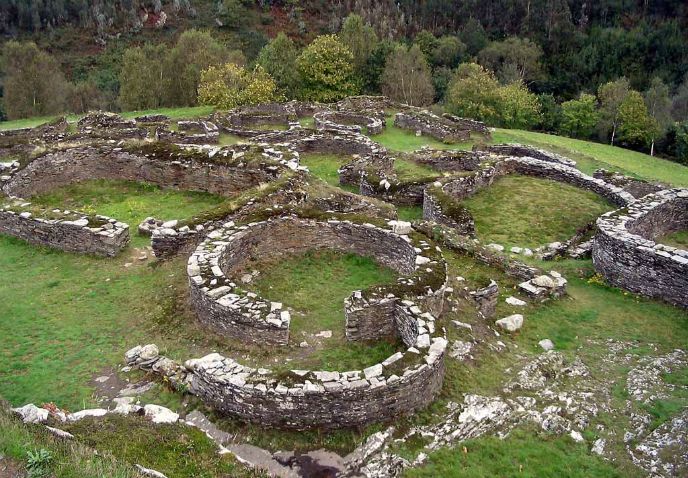 Famous Ruins of Castro de Coaña
Famous Ruins of Castro de Coaña
A 5-minute drive from the resort leads to the impressive ruins of a Celtic settlement, Castro de Coaña, and its museum.
The town’s seven hotels offer accommodations starting at 25 euros.
Tapia de Casariego
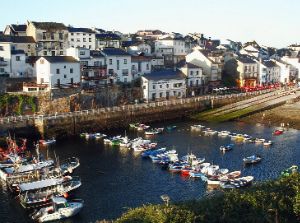 Tapia de Casariego - The Best Beaches in Spain for Family Vacations
This picturesque resort is located on the shores of an elongated bay formed by the river’s mouth.
Tapia de Casariego - The Best Beaches in Spain for Family Vacations
This picturesque resort is located on the shores of an elongated bay formed by the river’s mouth.
Nearby lies the coast of the Bay of Biscay. Penarronda – a surf spot west of the town, where left and right high waves crash against the pier.
Playa de Tapia is renowned for its high right-hand waves.
In spring, on the eve of Easter, surfers from all over the world gather in Tapia for the International Championship.
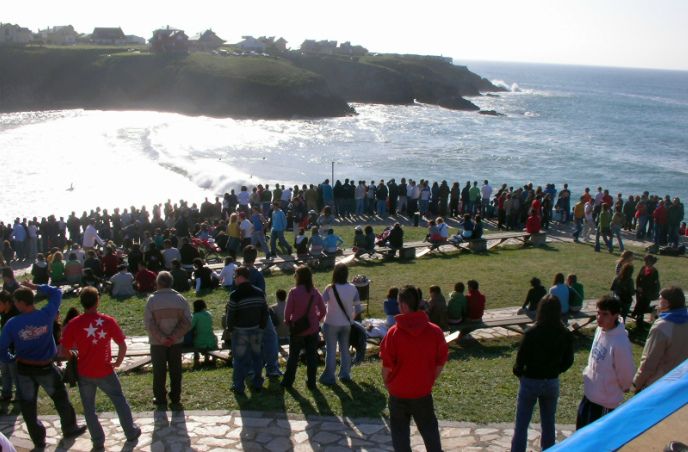 Waiting for miracles at the surf championship
Waiting for miracles at the surf championship
At the same time, the town’s central square hosts a Mussel Festival and a Crafts Fair.
Luxurious local boutique hotels and apartments offer rooms starting from 30 euros, while Chiquin Hostel offers accommodations for 20 euros.
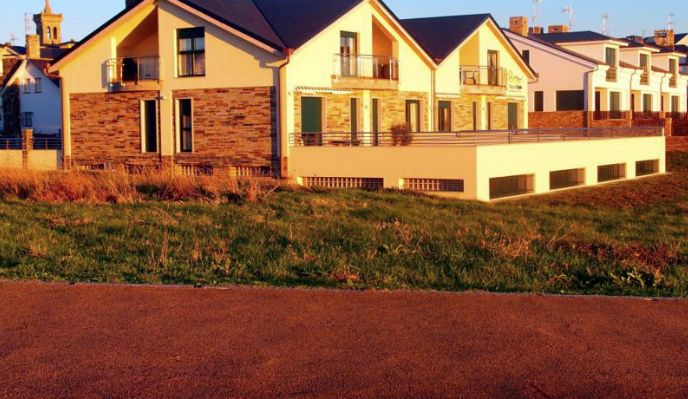 AptTurísticos Playa Tapia Hotel
AptTurísticos Playa Tapia Hotel
Asturias is a remarkable region with unique traditions, a strong sense of mutual help among people, and a deep respect for hard work. Only here can you go from skiing on snowy slopes to surfing waves in just 45 minutes. The stunning beauty of coastal areas, lush nature, impeccable service, and warm hospitality of the locals captivate the hearts of travelers.
